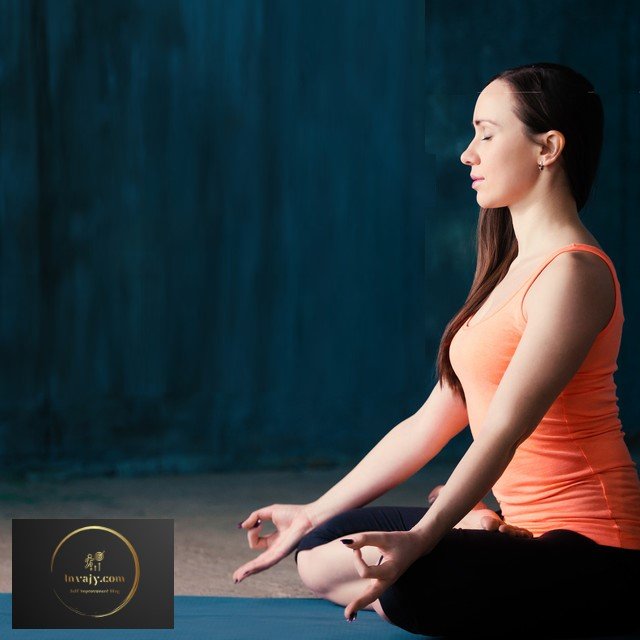Mindfulness Practices to exercise in your daily routine life
It’s getting more and more challenging to stay focused on present moment in the ever-changing surroundings of the today’s fast-paced life. Whatever we do in our day to day life; we often find that our thoughts, emotions, feelings and physical sensations distract us and takes us to past or future. This has given the opportunity to mindfulness become a buzzword in our modern world, but practicing mindfulness in daily routine life is not everyone’s cup of tea. People find it difficult to imbibe in their day to day life. If you are one of them, you are at the right place. In this article; I will share with you simple mindfulness practices to exercise in your daily routine life.
What is Mindfulness?
Mindfulness is the quality or state of being conscious or aware about something in the present moment. This is an exercise to live in the present moment and paying attention to your thoughts, emotions, feelings, and physical sensations without judgment. Mindfulness practices allows you to bring non-judgmental awareness about the present moment rather than dwelling in the past or worrying about the future.
Mindfulness Benefits
The mindfulness practices have considerable physical and mental health-related benefits:
- Relaxation
- Eases pain, decreases muscle tension
- Improves metabolism, assists in weight loss
- Reduces perception of stress and anxiety
- Improves concentration
- Supports healthy living
- Increases happiness
- Increases self awareness and self acceptance
- Fosters well being
- Benefits lungs and heart-slows respiratory rate and lowers blood pressure
- Benefits immune system so you stay healthy
- Slows aging
The Core of Mindfulness (3As of Being Mindful)
The core of mindfulness practices lies in the three things. These are called 3As of being mindful.
Attention:
Attention to what is occurring (thoughts, feelings, emotions and sensations) in the present moment. Going beyond looking mind body separately to see synchronization between them.
Awareness:
Awareness about self, surroundings and people you deal with. Not only this noticing and creating awareness about the materialistic thing in the nearby environment.
Attitude:
Attitude that is non-judgmental, curious, open to change and compassionate. Ready to unlearn to learn new things for continual personal growth.
Mindfulness Practices #1 : Mindful Breathing
The most basic way to do mindful exercise is mindful breathing. Mindful breathing is focus your attention on your breath, the body function which you do 24X7, but remain un-noticed.
Find a relaxed, comfortable position. You can do this while standing, but ideally you’ll be sitting or even lying in a comfortable position. You could be seated on a chair or on the floor on a cushion. Notice and relax your body. Tune into the rhythm of your breath. Pay attention and feel the natural flow of your breath coming in and going out while you inhale and exhale. You don’t need to do anything to your breath. Not long, not short, but natural. Notice where you feel your breath in your body. It might be in your abdomen. It may be in your chest or throat or in your nostrils. See if you can feel the sensations of breath, one breath at a time. The warmth or coolness of air, the fragrance it contains, the sound breathing makes. Observe everything non-judgmentally.

Be kind to your wandering mind. If you get distracted with your flying thoughts, redirect your attention right back to the breathing as soon as you notice the distraction.
Regular practice of mindful breathing can make it easier to deal with difficult situations. It helps you reduce anxiety, anger and calm yourself in a stressful moment.
Mindfulness Practices #2 : Mindful Hearing
Mindful hearing is attending to whatever sounds are coming to your ears in each moment. These sounds become the focal point to bring yourself into the present moment.
Find a comfortable place to sit or stand to practice mindful listening. Put aside physical distractions like your cell phone, laptop or other devices. Close your eyes and focus your attention on the sounds around you.
Depending on your surrounding environment, you might hear birds chirping, cars honking, ticks of clock or people talking. Listen to the sounds without judging them i.e. without labeling or naming, or getting caught up in whether you find them pleasant or unpleasant.

You may get distracted and get flowed in your thoughts. If your thoughts begin wandering, bring your attention back to the sound. Notice which sound triggered the thought wandering.
Do this exercise for 15 minutes everyday. Practicing this mindful meditation may help you cope with anxiety, stress, and depression.
Mindfulness Practices #3 : Mindful Body Scan Practice
One of the most accessible mindfulness practices is a body scan meditation, during which you bring attention to your body, noticing different sensations as you mentally scan down your body, from head to toe.
Start by getting comfortable. Lie down or sit in a position that allows you to stretch your limbs easily. Close your eyes and begin focusing on your breath. Notice the sensation of your breath filling and leaving your lungs as you inhale and exhale. Now focus on your forehead, right at the center. Then slowly move towards your neck, left shoulder, left hand, left hip, left thigh and left foot. Focus on that spot as you continue breathing slowly and deeply. Likewise repeat the same for right shoulder, right hand, right hip, right thigh and right foot.

Open your awareness to sensations of pain, tension, discomfort, or anything out of the ordinary. Notice tightness or tingling in your skin and any sensations in your muscles/bones. Spend anywhere from 20 seconds to 1 minute on every body spot for observing these sensations. If you begin to notice pain and discomfort, acknowledge it and observe any emotions these sensations bring up. Accept them without judgement. For example, if you feel frustrated and angry, don’t judge yourself for these emotions. Notice them and let them pass.
Do this exercise for 30 minutes everyday. Practicing this mindful meditation may help you reduces chronic pain, improves sleep quality, increase body relaxation, cope with anxiety and decrease stress.
Mindfulness Practices #4 : Mindful Walking
Mindful Walking is the exercise of becoming aware of your surroundings and how your body and mind feel while moving. Whether you are moving between floors of a building, on a city street, or in the woods, that can be an opportunity practice mindful walking. You try to become fully aware of whatever is around.
Find a comfortable place to walk. I personally practice mindful walking during morning walk. As you begin, walk at a natural pace. With each step, pay attention to the lifting and falling of your foot. Also pay attention to the cushioning effect of your shoes on your toes and heels. Notice movement in your legs and the rest of your body. Notice any shifting of your body from side to side.

Whatever distractions captures your attention, come back to the sensation of walking. Your mind will wander, so without frustration, guide it back again as many times as you need.
Another way to practice mindful walking is to put attention on the surroundings. You may notice that even though you move on the same road, but never noticed the tree which has beautiful flowers on it. Pay attention to the colour and shape of the flowers.
You may also pay attention to sounds you hear while walking without labeling or naming, or getting caught up in whether you find them pleasant or unpleasant.
Mindfulness Practices #5 : Mindful Eating
Mindful eating is maintaining an in-the-moment awareness of the food and drink you intake. This improves your awareness of your eating habits. This involves increasing your awareness about what you eat. Pay more attention to what you’re eating, the sensory experiences — color, aroma, texture, taste and smell. Observing how the food makes you feel and the signals your body sends about taste, satisfaction, and fullness.
Find a quiet space to eat that is free from distractions. Avoid using smart phones and watching TV while eating. Start by taking a few deep and intentional breaths before your meal. Tune into your senses by noticing what you see, hear, feel, taste, and smell. Continue to notice your senses as you take a bite of food and slowly chew. Pay attention to color, aroma, texture, taste and smell. Notice how hungry you feel as you eat. Continue to eat mindfully and stop eating when you notice your hunger subside.
Conclusion
To conclude, through mindfulness practices, over time, you will be able to carefully observe the thoughts and feelings within you and be more aware about world around you. Like all skills, training yourself to enjoy and live in the moment takes time and consistent practice. Begin now and see life from a new and fresh perspective. Please feel free to contact me if you need any help to imbibe mindfulness in your everyday life.
That’s all from my side in this post. Thank you for reading this. Please let us know your experiences about mindfulness practices? Share your facts about mindfulness practices in the comment section, they are much appreciated.
More about Mindfulness
- How mindfulness can change your life?
- Live in the moment (Mindfulness): The secret of health for mind and body
- Coronavirus anxiety : How mindfulness can help you to stay safe?
If you have liked this article on “mindfulness practices” please share it with your friends and relatives at your favorite social networks.







